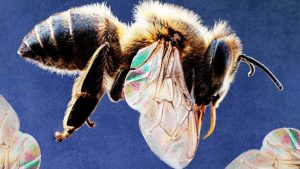Everything to know about Apitherapy
Apitherapy is an alternative therapy that uses products made by honey bees for medicinal purposes. These products include honey, beeswax, royal jelly, pollen, propolis, and bee venom. Apitherapists may use a combination of these products, depending on the condition they are treating.
Throughout history, people have recognized how important bees are, both as pollinators of plants and for the products they make.
The American Apitherapy Society says that honeybee products can treat various conditions, including arthritis, multiple sclerosis (MS), shingles, and gout.
This article explains what apitherapy is, what products bees make, and how people use the different honeybee products. It also looks at the benefits of apitherapy and the potential side effects and risks.
What is apitherapy?

Apitherapy is a natural therapy that uses products made by honeybees for medicinal or health benefits. Some people also refer to it as bee therapy.
Apitherapy has had a role in traditional medicine for centuries. The ancient Greek, Egyptian, and Chinese civilizations all used honeybee products to treat injuries and illnesses.
Today, researchers believe that these products promote health by reducing inflammation, improving circulation, and stimulating the immune system.
What products do people use for apitherapy?
Most of the products that people use for apitherapy come from one species of honeybee: Apis mellifera. Honeybee products that someone may use for apitherapy include:
Honey
Honey is probably the most well-known bee product. In apitherapy, people use honey in its raw form, which means that they have not filtered, processed, or heat-treated it. Honey contains small amounts of protein, minerals, vitamins, and enzymes. It also has antifungal and antiviral properties.
Bee venom
Worker bees produce venom to protect themselves and their hives from attack. Bees sting their attackers, injecting them with their venom. Bee venom is a mixture of proteins, amino acids, water, and volatile compounds that cause a painful reaction.
Royal jelly
Honeybees secrete nutrient-dense royal jelly to feed their larvae for the first few days of their lives. After that, only the bees that will become queens continue eating royal jelly. Worker bees usually live for 4–6 weeks, while queen bees can live for up to 6 years. Royal jelly is rich in B vitamins, proteins, and antioxidants. Antioxidants reduce the levels of free radicals in the body, which experts think may be responsible for aging.
Bee pollen
Pollen, which worker bees collect from plants, is rich in protein, vitamins, minerals, enzymes, and amino acids. Bees pollinate plants while collecting pollen, as they transfer it from one flower to another. They also eat it, and it provides most of their dietary protein.
Propolis
Propolis is a sticky substance that bees make from plant resins. It is antiseptic and antimicrobial, and honeybees use it to keep the inside of their hives free of bacterial and fungal infections.
Beeswax
Bees make wax to construct their honeycombs and plug the honey cells when they are ready. Bees also mix the wax with propolis to cover any cracks in the hive and protect the bees from infections.
Beebread
Bees process pollen by mixing it with honey and different enzymes. The pollen ferments and forms beebread, which is both nutrient-rich and easy to digest. It also preserves the nutrients in the food.
Summary
Apitherapy uses products from honeybees to promote human health.
Therapists may use these products to ease the symptoms of neurological diseases, such as Parkinson’s, and autoimmune conditions, such as arthritis.
Anyone considering using apitherapy to treat an existing condition or symptom must talk with a doctor to make sure that there are no possible interactions with their current medication.
To read the complete article go to;
Apitherapy: Benefits, risks, and more (medicalnewstoday.com)








